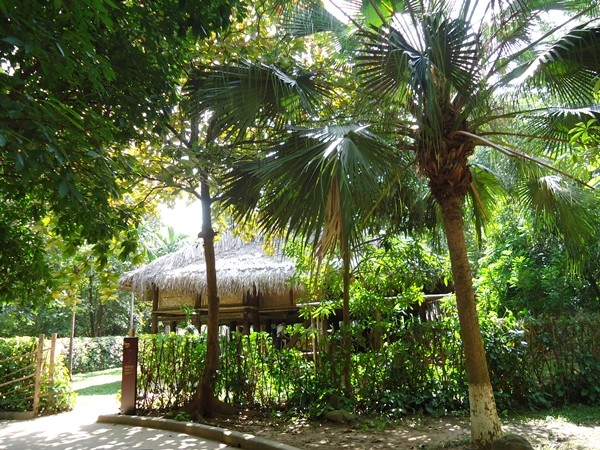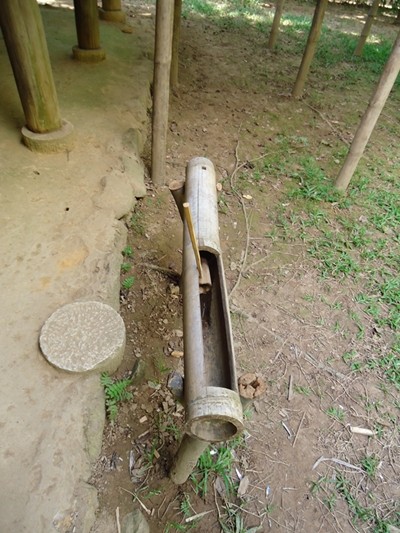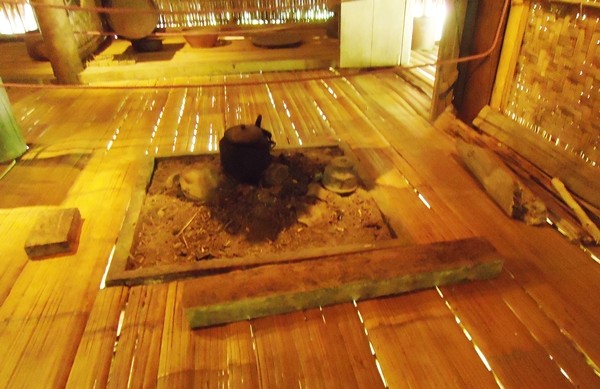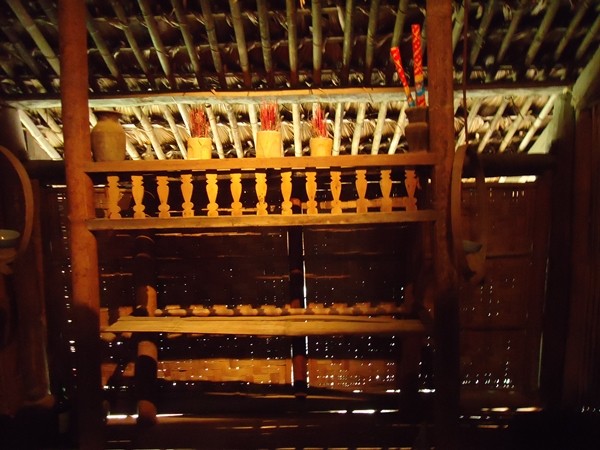Discover the unique architecture of traditional Tay stilt houses with SIXT.VN and plan your unforgettable Vietnam adventure today, enjoying seamless travel experiences, including convenient airport transfers and comfortable hotel bookings. Experience the rich cultural heritage of Vietnam, including the amazing architecture of Tay stilt houses, with reliable and affordable SIXT.VN services.
1. Introduction to Tay Ethnic Group and Their Stilt Houses
The Tay ethnic group, the second largest in Vietnam, boasts a rich cultural heritage deeply intertwined with their traditional stilt houses. These architectural marvels are more than just dwellings; they are symbols of community, tradition, and harmony with nature. According to the General Statistics Office of Vietnam, the Tay population is predominantly concentrated in the northeastern provinces of Vietnam, such as Lao Cai, Ha Giang, and Cao Bang. Their stilt houses are a defining feature of these landscapes, reflecting the Tay people’s ingenuity and adaptation to their environment.
These houses exemplify vernacular architecture, perfectly suited to the local climate and available resources. The stilt structure provides protection from floods and wild animals, while the use of natural materials like wood, bamboo, and palm leaves ensures sustainability. Moreover, the design of Tay stilt houses reflects the social structure and cultural values of the community, with designated spaces for family activities, rituals, and storage. As you plan your trip to Vietnam with SIXT.VN, be sure to include a visit to these regions to witness firsthand the beauty and significance of Tay stilt houses, enriching your cultural exploration with authentic experiences.
2. Architectural Features of Tay Stilt Houses
Tay stilt houses are marvels of traditional architecture, showcasing a unique blend of functionality and cultural symbolism. These houses are typically built on stilts, raising the living space above the ground to protect against flooding, dampness, and pests.
2.1. Foundation and Structure
The foundation is composed of sturdy wooden pillars that support the entire structure. The number of pillars varies, but it is always an odd number, reflecting the Tay people’s belief in balance and harmony. The pillars are often made from locally sourced hardwoods, ensuring durability and longevity. The structure is designed to withstand the region’s tropical climate, with steep roofs to facilitate rainwater runoff and open spaces to allow for ventilation.
2.2. Materials Used
Traditional Tay stilt houses primarily utilize natural materials such as wood, bamboo, and palm leaves. The walls are typically made of woven bamboo, providing a lightweight and breathable enclosure. The roof is thatched with palm leaves, offering excellent insulation against heat and rain. Wood is used for the pillars, beams, and flooring, providing structural strength and stability. These materials are not only readily available but also environmentally sustainable, reflecting the Tay people’s commitment to living in harmony with nature.
 Tay Stilt House Pillars
Tay Stilt House Pillars
2.3. Layout and Design
The layout of a Tay stilt house is carefully designed to maximize functionality and reflect the social structure of the family. The house typically consists of three main sections: the living area, the kitchen, and the sleeping quarters. The living area is a communal space where family members gather to eat, relax, and socialize. The kitchen is located at the back of the house and is considered the heart of the home. The sleeping quarters are usually located on either side of the living area, providing privacy for family members. According to a study by the Vietnam National Institute of Culture and Arts Studies, the layout of Tay stilt houses often reflects the family’s social hierarchy, with the oldest members occupying the most respected positions in the house.
2.4. Roof Structure and Materials
The roof is a defining feature of Tay stilt houses, designed to provide protection from the elements and regulate the internal temperature. It is typically steep, with a high pitch that allows rainwater to run off quickly. The roof is thatched with layers of palm leaves, providing excellent insulation against heat and cold. The thickness of the thatch can vary depending on the local climate, with thicker roofs in areas with heavy rainfall or extreme temperatures. The roof structure is supported by a network of wooden beams and rafters, ensuring stability and durability.
 Palm Leaf Roof of Tay Stilt House
Palm Leaf Roof of Tay Stilt House
2.5. Significance of the Staircase
The staircase is an essential element of Tay stilt houses, serving both a practical and symbolic function. It provides access to the elevated living space and is often considered a sacred part of the house. The number of steps is always an odd number, typically nine or eleven, reflecting the Tay people’s belief in good fortune. Before entering the house, visitors are expected to wash their feet in a bamboo tube filled with water, symbolizing purification and respect. The staircase is also a social space where young people gather in the evenings to chat and socialize.
 Tay Stilt House Staircase
Tay Stilt House Staircase
3. Interior Arrangement and Functionality
The interior of a Tay stilt house is thoughtfully arranged to optimize functionality and reflect the cultural values of the family. Each area serves a specific purpose, contributing to the overall harmony and efficiency of the household.
3.1. Living Area and Social Space
The living area is the heart of the Tay stilt house, serving as a communal space for family members to gather, eat, and socialize. It is typically a large, open area with minimal furniture, encouraging a sense of togetherness and connection. The bamboo floor provides a comfortable surface for sitting and sleeping, and the woven bamboo walls allow for natural ventilation. According to cultural anthropologist Dr. Le Thi Thanh, “The living area is where the family’s stories are shared, traditions are passed down, and bonds are strengthened.”
3.2. Kitchen and Hearth
The kitchen is located at the back of the house and is considered the center of culinary activities and family warmth. The hearth, or fireplace, is a focal point of the kitchen, used for cooking, heating water, and providing light. It is also a gathering place for family members to share stories and meals. The kitchen is typically equipped with basic cooking utensils, such as pots, pans, and knives, as well as storage containers for rice, vegetables, and other food items.
 Tay Stilt House Fireplace
Tay Stilt House Fireplace
3.3. Sleeping Quarters and Privacy
The sleeping quarters are located on either side of the living area, providing privacy for family members. The sleeping area is typically a simple space with mats laid out on the bamboo floor. Older members of the family often have raised sleeping platforms made of wood, signifying their status and respect. The sleeping quarters are also used for storage, with personal belongings kept in wooden chests or baskets.
3.4. Storage Areas and Pantries
Tay stilt houses are designed with ample storage space to accommodate the family’s belongings and provisions. Pantries are located near the kitchen, providing easy access to food items and cooking utensils. Storage areas are also found under the house, where farm implements, tools, and firewood are kept. The efficient use of space reflects the Tay people’s resourcefulness and practicality.
3.5. Altar and Spiritual Corner
A small altar is usually placed in a prominent location within the house, serving as a sacred space for honoring ancestors and spirits. The altar is adorned with incense, candles, and offerings of food and drink. Family members gather at the altar to pray for good health, prosperity, and protection. The presence of the altar underscores the importance of spirituality in Tay culture.
 Tay Stilt House Ancestor Altar
Tay Stilt House Ancestor Altar
4. Cultural Significance and Symbolism
Tay stilt houses are not merely physical structures; they are imbued with deep cultural significance and symbolism, reflecting the Tay people’s beliefs, values, and way of life.
4.1. Connection to Nature
The design and construction of Tay stilt houses demonstrate a profound connection to nature. The use of natural materials, such as wood, bamboo, and palm leaves, reflects the Tay people’s respect for the environment and their ability to live in harmony with it. The location of the houses near water sources and surrounded by lush vegetation further emphasizes this connection. According to environmentalist Dr. Tran Van Nam, “Tay stilt houses are a testament to sustainable living, demonstrating how humans can build shelters that are both functional and environmentally friendly.”
4.2. Family and Community
Tay stilt houses are designed to foster a sense of family and community. The open layout of the living area encourages interaction and togetherness, while the communal spaces promote social cohesion. The houses are often built close to each other, creating a sense of village unity. The construction of a new stilt house is a community effort, with neighbors and relatives helping to gather materials, build the structure, and celebrate its completion.
4.3. Protection and Security
The elevated structure of Tay stilt houses provides protection from floods, wild animals, and intruders. The stilts raise the living space above ground level, keeping the inhabitants safe from the elements and potential threats. The sturdy construction of the house, with its strong wooden pillars and woven bamboo walls, offers a sense of security and stability. The design of the house also allows for easy surveillance of the surrounding area, enhancing the safety of the community.
4.4. Spiritual Beliefs and Rituals
Tay stilt houses are often associated with spiritual beliefs and rituals. The altar is a sacred space where family members honor their ancestors and seek blessings from the spirits. Certain areas of the house are considered off-limits to certain individuals, such as pregnant women or guests, to avoid disturbing the spirits. The construction of a new stilt house is often accompanied by rituals and ceremonies to ensure good fortune and protection for the family.
4.5. Adaptation to the Environment
Tay stilt houses are a prime example of architectural adaptation to the environment. The design of the houses is specifically tailored to the local climate, topography, and available resources. The elevated structure protects against flooding and dampness, while the use of natural materials ensures sustainability. The steep roof facilitates rainwater runoff, and the open spaces allow for ventilation. The houses are also designed to withstand earthquakes and strong winds, demonstrating the Tay people’s ingenuity and resilience.
5. Modern Adaptations and Preservation Efforts
While traditional Tay stilt houses remain an integral part of the cultural landscape, modern adaptations and preservation efforts are crucial to ensuring their survival in the face of changing times.
5.1. Incorporating Modern Materials
In some cases, modern materials are being incorporated into the construction of Tay stilt houses to enhance their durability and comfort. Concrete pillars may be used instead of wood to provide a stronger foundation, and corrugated metal roofing may replace palm leaves for better weather protection. However, these adaptations are carefully considered to maintain the traditional aesthetic and cultural significance of the houses.
5.2. Maintaining Traditional Design
Despite the introduction of modern materials, efforts are made to maintain the traditional design and layout of Tay stilt houses. The basic structure, roof pitch, and interior arrangement are preserved to honor the cultural heritage of the Tay people. Local artisans are often employed to ensure that the construction adheres to traditional techniques and standards.
5.3. Government Support and Funding
The Vietnamese government recognizes the cultural value of Tay stilt houses and provides support for their preservation. Funding is available for the restoration and maintenance of traditional houses, as well as for the construction of new houses that adhere to traditional designs. The government also promotes tourism to Tay villages, providing economic incentives for preserving the cultural heritage. According to a report by the Ministry of Culture, Sports, and Tourism, “Preserving traditional architecture is essential for maintaining the cultural identity of ethnic minority groups in Vietnam.”
5.4. Community Involvement and Education
Community involvement is crucial to the preservation of Tay stilt houses. Local residents are encouraged to participate in the restoration and maintenance of traditional houses, and educational programs are offered to raise awareness about the cultural significance of these structures. By involving the community in preservation efforts, the cultural heritage is passed down to future generations.
5.5. Sustainable Tourism Initiatives
Sustainable tourism initiatives are being developed to promote responsible travel to Tay villages. These initiatives focus on preserving the cultural heritage, protecting the environment, and benefiting the local community. Tourists are encouraged to stay in traditional stilt houses, purchase local handicrafts, and participate in cultural activities, providing economic support for the preservation of Tay culture.
6. Planning Your Visit to Experience Tay Stilt Houses
Planning a visit to experience the beauty and cultural significance of Tay stilt houses requires careful consideration of travel arrangements, accommodation, and cultural etiquette. With SIXT.VN, you can ensure a seamless and enriching travel experience.
6.1. Best Time to Visit
The best time to visit the Tay regions of Vietnam is during the dry season, which typically runs from October to April. During this time, the weather is mild and pleasant, making it ideal for exploring the countryside and visiting traditional villages. The rainy season, from May to September, can bring heavy rainfall and flooding, making travel more difficult.
6.2. Transportation Options
To reach the Tay regions, you can take a bus or train from Hanoi to major towns such as Lao Cai, Ha Giang, or Cao Bang. From there, you can hire a local taxi or motorbike to reach the smaller villages where Tay stilt houses are located. SIXT.VN offers convenient and reliable airport transfer services from Hanoi to your accommodation, as well as car rental options for exploring the region at your own pace.
6.3. Accommodation Choices
Many Tay villages offer homestay accommodations in traditional stilt houses, providing a unique opportunity to experience the local culture firsthand. These homestays typically offer basic amenities, such as comfortable beds, clean bathrooms, and home-cooked meals. Alternatively, you can stay in hotels or guesthouses in the larger towns and take day trips to the Tay villages. SIXT.VN provides a wide range of hotel booking options to suit your budget and preferences.
6.4. Cultural Etiquette and Respect
When visiting Tay villages, it is important to be respectful of the local culture and customs. Dress modestly, remove your shoes before entering a stilt house, and ask for permission before taking photographs. Learn a few basic Vietnamese phrases to communicate with the locals, and be mindful of their traditions and beliefs. According to the Vietnam Tourism Advisory Board, “Respecting local culture is essential for creating a positive and sustainable tourism experience.”
6.5. Activities and Attractions
In addition to visiting Tay stilt houses, there are many other activities and attractions to enjoy in the region. You can hike through the rice paddies, visit local markets, explore caves and waterfalls, and learn about the traditional crafts of the Tay people. Consider booking a guided tour with SIXT.VN to ensure a comprehensive and enriching experience.
7. SIXT.VN Services for Your Vietnam Adventure
SIXT.VN offers a range of services to enhance your travel experience in Vietnam, including convenient airport transfers, comfortable hotel bookings, and guided tours to explore the cultural heritage of the country.
7.1. Airport Transfer Services
SIXT.VN provides reliable and efficient airport transfer services from Hanoi’s Noi Bai International Airport to your accommodation. Our professional drivers will meet you at the airport and transport you safely and comfortably to your destination. This service ensures a hassle-free start to your Vietnam adventure.
Address: 260 Cau Giay, Hanoi, Vietnam.
7.2. Hotel Booking Options
SIXT.VN offers a wide range of hotel booking options to suit your budget and preferences. Whether you are looking for a luxury hotel in Hanoi or a cozy guesthouse in a Tay village, we can help you find the perfect accommodation for your needs.
7.3. Guided Tours and Excursions
SIXT.VN offers guided tours and excursions to explore the cultural and natural attractions of Vietnam. Our knowledgeable guides will take you to the most fascinating destinations, providing insights into the history, culture, and traditions of the country.
Hotline/Whatsapp: +84 986 244 358.
7.4. Car Rental Services
For travelers who prefer to explore at their own pace, SIXT.VN offers car rental services with a variety of vehicles to choose from. Rent a car and discover the hidden gems of Vietnam, from the bustling streets of Hanoi to the serene landscapes of the Tay regions.
7.5. Customer Support and Assistance
SIXT.VN is committed to providing excellent customer support and assistance throughout your journey. Our team is available 24/7 to answer your questions, address your concerns, and ensure that your travel experience is smooth and enjoyable.
Website: SIXT.VN.
8. Why Choose SIXT.VN for Your Travel Needs?
Choosing SIXT.VN for your travel needs ensures a convenient, reliable, and enriching experience. Here are some key reasons to trust us with your Vietnam adventure:
8.1. Convenience and Reliability
SIXT.VN offers a one-stop solution for all your travel needs, from airport transfers and hotel bookings to guided tours and car rental services. Our services are designed to be convenient and reliable, ensuring a hassle-free travel experience.
8.2. Wide Range of Options
SIXT.VN provides a wide range of options to suit your budget and preferences. Whether you are looking for luxury accommodations, budget-friendly transportation, or customized tour packages, we have something to offer everyone.
8.3. Expert Knowledge and Support
Our team of travel experts has extensive knowledge of Vietnam and is dedicated to providing personalized support and assistance. We can help you plan your itinerary, book your accommodations, and navigate the local culture.
8.4. Competitive Pricing
SIXT.VN offers competitive pricing on all our services, ensuring that you get the best value for your money. We also provide transparent pricing with no hidden fees or charges.
8.5. Commitment to Customer Satisfaction
SIXT.VN is committed to customer satisfaction and strives to exceed your expectations. We value your feedback and are constantly working to improve our services and enhance your travel experience.
9. Testimonials and Reviews
Here are some testimonials and reviews from satisfied customers who have used SIXT.VN for their travel needs in Vietnam:
9.1. John Smith, USA
“SIXT.VN provided excellent airport transfer services in Hanoi. The driver was punctual and professional, and the vehicle was clean and comfortable. I highly recommend their services.”
9.2. Emily Brown, Australia
“I booked a guided tour with SIXT.VN to explore the Tay villages in Ha Giang. The guide was knowledgeable and friendly, and I learned a lot about the local culture and traditions. It was an unforgettable experience.”
9.3. David Lee, Canada
“SIXT.VN helped me find the perfect hotel in Hanoi for my business trip. The location was convenient, the amenities were excellent, and the price was very reasonable. I will definitely use their services again.”
9.4. Sarah Johnson, UK
“I rented a car from SIXT.VN to explore the countryside of Vietnam. The car was in excellent condition, and the rental process was smooth and easy. I had a great time driving through the scenic landscapes.”
9.5. Michael Chen, Singapore
“SIXT.VN provided excellent customer support and assistance throughout my trip to Vietnam. They answered all my questions promptly and efficiently, and they helped me resolve any issues that arose. I am very grateful for their services.”
10. FAQs About Tay Stilt Houses
Here are some frequently asked questions about Tay stilt houses:
10.1. What are Tay stilt houses made of?
Tay stilt houses are primarily made of natural materials such as wood, bamboo, and palm leaves.
10.2. Why are Tay stilt houses built on stilts?
Tay stilt houses are built on stilts to protect against flooding, dampness, and pests.
10.3. How many steps does a Tay stilt house typically have?
A Tay stilt house typically has an odd number of steps, usually nine or eleven.
10.4. What is the significance of the altar in a Tay stilt house?
The altar is a sacred space where family members honor their ancestors and seek blessings from the spirits.
10.5. What is the best time to visit Tay villages?
The best time to visit Tay villages is during the dry season, from October to April.
10.6. Are there homestays available in Tay stilt houses?
Yes, many Tay villages offer homestay accommodations in traditional stilt houses.
10.7. How can I get to the Tay regions from Hanoi?
You can take a bus or train from Hanoi to major towns such as Lao Cai, Ha Giang, or Cao Bang.
10.8. What should I wear when visiting a Tay village?
It is important to dress modestly when visiting a Tay village.
10.9. Is it okay to take photographs of Tay stilt houses?
Ask for permission before taking photographs of Tay stilt houses or local residents.
10.10. How can SIXT.VN help me plan my trip to visit Tay stilt houses?
SIXT.VN offers a range of services to enhance your travel experience, including airport transfers, hotel bookings, guided tours, and car rental services.
Plan your unforgettable Vietnam adventure with SIXT.VN and discover the unique architecture and cultural significance of Tay stilt houses. Contact us today to book your trip!



